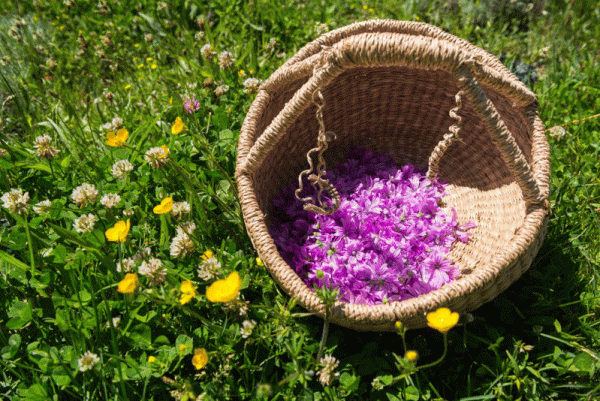Catalonia hosts a spectacular natural heritage. Spring, a season when flowers are at their best and fill the landscape with colours, is a perfect moment to stroll through nature and to find out about the Catalan wild plants. This newsletter presents activities, routes and experiences aimed at discovering that wild vegetation. Come and admire the biological and landscape diversity of Catalonia!
Wild plants of the Pyrenees
Let’s start in the Pyrenees, which host a wide range of specimens, from Mediterranean thymes to Alpine plants. This great variety of species and subspecies is due to the range of relieves, geologic materials and climates of the area. A good way to discover the Pyrenean flora consists of walking through Alt Pirineu Herb Field, a garden located in Pallars Sobirà that gathers more than 60 aromatic and medicinal plants. Apart from seeing them, you will have the opportunity to taste them, to smell them and to get impressed by the explanations of the skilled guides who really love their land. What are you waiting for?
If you prefer walking through the mountain and discovering all its secrets, contact MónNatura Pirineus. This nature centre offers routes aimed at discovering the landscapes of the Pyrenees and other charming sites such as Aigüestortes National Park, València Forest and Escalarre Swamps, which will allow you to know all about the Catalan flora and some of the most protected plants in Catalonia.
Another natural site you must see is Alt Pirineu National Park, located in Pallars Sobirà region, especially its Comes de Rubió, an emblematic spot of Orri Massif that is full of wild plants that you can discover accompanied by some guide of Som Riu Guiatges. Did you know that Alt Pirineu Natural Park is the largest protected natural area in Catalonia?
A bit further north, Aran Valley is mainly covered with forests of beech trees, fir trees, oaks, and extended green meadows that host Alpine flowers, some of which are quite difficult to find, such as arnicas and sundews. If you don’t want to miss them, we recommend that you go for a hike with Verd e Blu, whose experts in botany will help you to identify them and will tell you all about the local traditions. You will love it!
Wild plants with medicinal uses
If you are mainly interested in wild herbs that have medicinal uses, go and meet Judith Mira in Alta Ribagorça. This biologist and nature guide is a great expert in medicinal plants! She will also take you to visit the local organic field (Taüll Orgànics), whose arnica and edelweiss flowers are used to make anti-inflammatory creams. This botanical hike will definitely impress you!
La Segarra high plain is another place that hosts a great deal of the Catalan wild plants. A hike in the company of a guide from Sikarra Nostra will allow you to discover and to identify the vegetal species located on paths, garrigues and forests and to find out about the medicinal and gastronomic uses of some of the wild plants you can find in the Ponent region.
Ethnobotanical activities
But plants are not only used to make pretty, to spread their smell or to make ointments, as Els Corremarges Association tries to teach the visitors. Their guides will take you for a hike in order to discover the flora of the immediate landscape from an ethnobotanical point of view. If you like gastronomy, they also offer an workshop on wild cuisine in which you will cook some of the best edible plants of the local scenery. Apart from Els Corremarges, other organisations give you the opportunity to interpret local plants from a different view: Eixarcolant Association (Anoia) and Les teranyines del Corral (Terra Alta) also allow you to understand plants from a more creative viewpoint.
According to Eixarcolant Association, “you just need to open your eyes carefully to discover plants and to be able to start using them”. Their ethnobotanical walks will allow you to know all about the culinary uses of wild plants; a really pleasant and funny activity for all. And if you want to taste them, go for a wild tasting session, which consists of four tapas, two desserts and two drinks, accompanied with some explanations on the species used for each dish, their organoleptic and nutritional properties, as well as on the pairing possibilities. What about cooking wild plants at home and feeling like Michelin star chef?
Dye plants in Catalonia
If you want to play with plants rather than tasting them, Marisa Huguet, at Teranyines del Corral, will give you the opportunity to dye fabrics with plants. The wild species that can be used to dye textile fibres vary depending on the seasons. Discover them and find out about the colours given by each specific plant and about the whole dyeing process. Go for the workshop on natural plant dyeing and feel like a real artist!
Before finishing this newsletter, we would like you to reflect on the importance of flora to the natural heritage of Catalonia. It is a key factor for the evolution of the living beings that must be preserved in order to protect biodiversity. This said, what wild plant activity are you going to start with?
